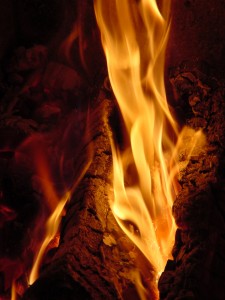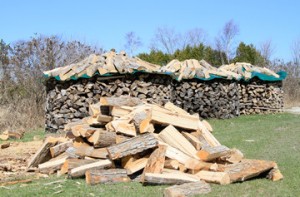 Cold weather is one of the reasons I love Canada, and heating with wood is one of the reasons I love cold weather. The most obvious wood heating advantage these days is the money it can save, but wood heat is also satisfying in other ways that nothing else can match. Or at least that’s my conviction, anyway. If you’ve got access to firewood, gearing up for heating with wood makes sense on several levels, and one of them is environmental.
Cold weather is one of the reasons I love Canada, and heating with wood is one of the reasons I love cold weather. The most obvious wood heating advantage these days is the money it can save, but wood heat is also satisfying in other ways that nothing else can match. Or at least that’s my conviction, anyway. If you’ve got access to firewood, gearing up for heating with wood makes sense on several levels, and one of them is environmental.
Wood heat doesn’t contribute to the greenhouse effect because the carbon released from combustion isn’t new carbon, as it is with all fossil fuels. Burning wood can certainly add other kinds of pollutants to the air, but that’s much less of a problem with the new generation of certified wood burning appliances that operate with astonishing efficiency.
The most common, independent yardstick for measuring the performance of wood burning stoves and fireplace inserts comes from the Environmental Protection Agency (EPA), a branch of the US government. That’s why the main thing to look for on any new wood burning appliance is an EPA certification sticker.
Although cleanliness of combustion doesn’t necessarily translate into more heat delivered to the room from a given amount of wood, in practice the two are linked. Got a traditional fireplace at your home? These are sometimes so inefficient that more heat gets lost up the chimney than gets transferred to the room, though fireplaces don’t have to be this bad.
Air-tight fireplace inserts let you convert most open fireplaces into a productive part of your home heating system. They’re really just a specialized woodstove designed to fit within a masonry opening, offering efficiencies almost on par with the best stand-alone woodstoves. Inserts are governed by the same EPA emissions specs, too, so look for certification proof when you’re shopping.
Interested in reliability? Both woodstoves and inserts offer heat even when the power goes out, a claim that almost no other heating source can boast.
 Aesthetics is another reason I like heating with wood, especially the aesthetics of well-piled firewood. After twenty years of stacking wood in the usual, straight rows, I use the Scandinavian approach, partly because it looks so good.
Aesthetics is another reason I like heating with wood, especially the aesthetics of well-piled firewood. After twenty years of stacking wood in the usual, straight rows, I use the Scandinavian approach, partly because it looks so good.
On the other side of the Atlantic, where people have been taking wood heat seriously for centuries longer than we have, round wood piles are common. And I now know why. They take less time to stack, they shed water better and they’re more stable. At least if you understand a few tricks, that is.
I lay out my round wood piles with a five foot long piece of rope that has a loop in one end. Push a metal spike into the ground where the centre of the pile will be, then pull the rope tight and use the end to guide placement of the outside ends of the logs making up the bottom layer of wood. Keep stacking and checking several layers around the perimeter of the circle, then remove the stake and rope. Fill the centre of the circle with randomly thrown-in pieces of wood, then build more wall when you’ve filled the centre portion, tilting the wall inwards slightly for stability as you go up. Add 4 or 5 ten-foot long wooden poles across the diameter of the circle as you go up, then dome the top and place a tarp over the wood for shelter. Another layer or two of wood on top holds the tarp down and keeps the pile looking terrific, which, as I said, is one of the great fringe benefits of wood heat.